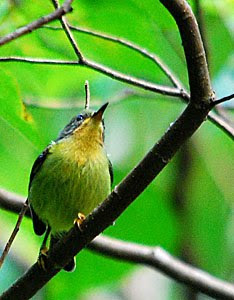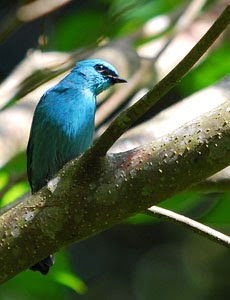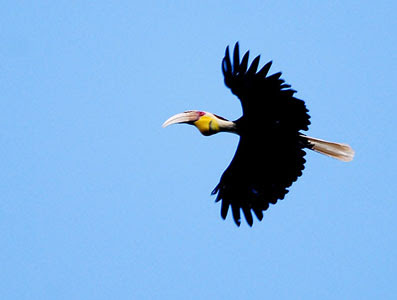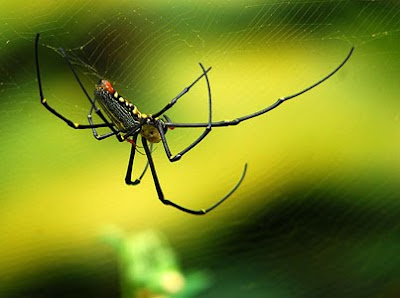I was rather excited when Choo Eng suggested that we should bird at this locality as it is a new site to me and Choo Eng himself has only been there once so far. There is always the possibility that a new location can turn out to be a real hotspot. The last new locality that we went to which was Bukit Wang, was a real goldmine. I am keeping my fingers crossed that we will hit the jackpot again with this new site located within the wild areas of Baling, Kedah. The access road that leads up to the summit which is about 900 meters above sea level looks very promising upon our arrival. After passing through some agricultural land, it becomes quite isolated as the only people that use this road from here regularly are the Telekom personnel manning the station at the summit.

So, the environment is favourable but what about the birds? A male Orange-breasted Trogon was very quick to answer my question with his signature 4-note call. Although he was calling from a distance and was a little too far for my camera, the exposed perch provided me with excellent views.

When we came across a fruiting tree that was bustling with birds, we just took up position and enjoyed the show. Actually, that was pretty much all we can do as most of the species that came to the tree were the small and extremely active ones like this Everett 

A total of three species of sunbirds were present, the Plain Sunbird being the dullest in terms of colours.

The Ruby-cheeked Sunbirds were being their usual difficult selves and I only managed one measly shot of the female.

The male Scarlet Sunbird is certainly one if the most stunning of birds that occur in the Malaysian 

A stunning male Verditer Flycatcher also came to the tree and was after the insects attracted by the fruits rather than the fruits themselves.

Later in the morning, the diagnostic wing beats of hornbills caught my attention. I could see them flying towards my direction but the small between the foliage provided me with only a small window of opportunity to photograph them. So when, a trio of Wreathed Hornbills flew pass that window, I did my best to capture these amazing birds.



About a minute later, I could hear the locomotive-like wing beats again. As I was photographing the second group of three birds again, I took them as part of the same flock of the earlier. However when I examined my shots after, I was stunned to find that the second group was of another species altogether. The Plain-pouched Hornbills looked remarkably similar to the commoner Wreathed Hornbills and as the name suggests, it lacks the black line across the yellow gular pouch. This species is known to travel in flocks numbering up to about a thousand at certain times of the year. Unfortunately, I still do not have the good fortune to witness this spectacle of nature. 

The broadbills are well represented in this trip. It is never easy to pick out a bird from the dense foliage of the canopy and if the bird is completely green like this female Green Broadbill, then efforts must be doubled. 

The Black-and-yellow Broadbill is another species that can be easily overlooked despite its brilliant colours and distinctive call. However when you do find one, this species is certainly a sight for sore eyes.

A group of inquisitive Dusky Broadbills was the highlight for the trip. I have been trying for years to capture reasonable images of this species and today, my prayers were answered.



Friend or foe? I reckon friend as both the Whiskered Treeswift and the flying lizard pose no threat to each other.

This maiden trip produced more than fifty species for me and that is quite a notable total. I’m pretty sure I will be back along this forested hilly road again. There were times when things got a little slow but I took advantage of the lull to capture other wildlife that this place has to observe like this gibbon…

A pair of Orb Spiders certainly makes an odd couple. The small reddish male looks more like an infant when compared to his mate. Female spiders as a whole tend to consume their much smaller mates after mating. That is the life of male spiders. I guess they give new meaning to the phrase a love that is to die for.



There was one tree that attracting quite a number of butterflies but unfortunately, its flowers are located right at the very top of its canopy.


































